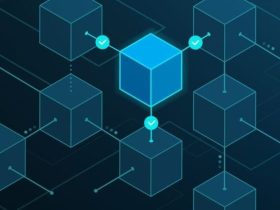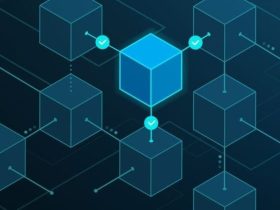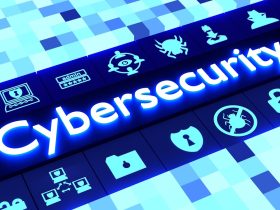In an era defined by digital interconnectivity and rapid technological evolution, cybersecurity stands as both a bulwark and a battlefield. On March 3, 2025, the cybersecurity landscape is witnessing transformative partnerships, unprecedented funding injections, and the emergence of novel threats that could redefine the rules of engagement for companies, governments, and individuals alike. Today’s briefing—crafted in an op-ed style—dives deep into six critical developments shaping this dynamic industry. From Nvidia’s groundbreaking use of CUDA to accelerate AI-driven cybersecurity measures, to stark warnings about PC security essentials, from innovations that empower producers with enhanced safety and profitability to seismic shifts in cyber leadership driven by geopolitics and generational change; from vulnerabilities in private 5G networks amid an AI boom to Malaysia’s rapid ascent as a regional leader in AI cybersecurity—each story carries implications that extend far beyond headlines.
This comprehensive analysis not only summarizes these news pieces but also offers informed commentary on their broader impact. Whether you’re a cybersecurity professional, a technology investor, or a curious observer, this article provides actionable insights into how partnerships, funding trends, and emerging threats are reshaping the cybersecurity landscape.
I. Introduction: Navigating the New Cybersecurity Paradigm
The digital revolution has delivered unprecedented opportunities—and unprecedented risks. In a world where data breaches, ransomware attacks, and sophisticated cyber intrusions are daily news, the need for robust cybersecurity has never been more critical. Today’s briefing brings together diverse news stories from trusted sources to paint a detailed picture of the current state of cybersecurity:
- Nvidia’s CUDA Accelerated AI Cybersecurity: A deep dive into how AI is transforming threat detection and response.
- PC Security Essentials: A cautionary tale underscoring the importance of fundamental security measures for personal computers.
- Cybersecurity and AI for Safer Production: An exploration of how cybersecurity measures, coupled with AI, are making production environments safer and more profitable.
- Geopolitics, AI, and Generational Shifts in Cyber Leadership: An analysis of emerging trends reshaping how organizations approach cybersecurity leadership.
- Security Gaps in Private 5G Networks: A look at the vulnerabilities plaguing private 5G networks amid an AI-fueled technological boom.
- Malaysia’s Rise as an AI Cybersecurity Powerhouse: A regional spotlight on Malaysia’s emergence as a leader in the field.
Each of these stories not only represents a key development in cybersecurity but also serves as a barometer for the evolving threats and opportunities in an increasingly interconnected world. As we explore these topics, we’ll examine the underlying trends, the strategic moves by industry giants, and the policy implications that may well dictate the future of cybersecurity.
II. Nvidia’s CUDA Accelerated AI Cybersecurity: Revolutionizing Threat Detection
A. The NVIDIA Breakthrough
Nvidia, a name synonymous with high-performance computing and graphics processing, has once again pushed the boundaries of innovation. In a recent blog post on their official platform, Nvidia detailed how its CUDA-accelerated AI cybersecurity framework is revolutionizing the way threats are detected and mitigated. By leveraging the parallel processing capabilities of CUDA, Nvidia is enabling AI systems to analyze massive data sets in real time—delivering insights at speeds previously unimaginable.
Source: Nvidia Blog
This breakthrough isn’t just a technological milestone; it’s a paradigm shift. Traditionally, cybersecurity solutions have relied on heuristic and signature-based approaches, which, while effective against known threats, often struggle to keep pace with the ever-evolving tactics of cyber adversaries. Nvidia’s integration of CUDA acceleration with advanced AI algorithms allows for the rapid identification of anomalies and sophisticated threat patterns, thereby enabling proactive defenses against zero-day exploits and advanced persistent threats (APTs).
B. Implications for the Cybersecurity Ecosystem
The implications of this development are far-reaching. For enterprises, the ability to harness AI-driven threat detection means that security operations centers (SOCs) can transition from reactive to proactive postures. Instead of waiting for an attack to occur, organizations can now leverage real-time analytics to predict and prevent breaches before they materialize.
Moreover, Nvidia’s innovation represents a critical convergence of hardware and software solutions in cybersecurity. With cyberattacks becoming more frequent and complex, the demand for high-performance computing resources that can support AI applications is skyrocketing. Nvidia’s solution not only positions the company as a leader in this space but also sets a benchmark for other industry players to follow.
C. Strategic Analysis and Future Prospects
From a strategic perspective, Nvidia’s CUDA-accelerated AI cybersecurity solution is a testament to the growing importance of integrating artificial intelligence into security frameworks. As cyber threats continue to evolve in sophistication, traditional methods of defense will no longer suffice. Companies that invest in cutting-edge technologies like Nvidia’s are likely to gain a competitive advantage by significantly reducing their risk exposure.
In the broader cybersecurity ecosystem, this development underscores the necessity of collaboration between hardware manufacturers, software developers, and cybersecurity professionals. As organizations increasingly adopt AI-driven approaches, there will be a corresponding need for robust infrastructure, regulatory oversight, and continuous innovation to keep pace with emerging threats.
D. Opinion: Embracing Innovation to Counter Modern Threats
In my view, Nvidia’s latest innovation is not merely an incremental improvement; it is a bold leap toward a future where cybersecurity is powered by intelligent automation and real-time analysis. The ability to detect and neutralize threats at the speed of data is critical in a landscape where every second counts. For businesses, adopting such advanced technologies is no longer optional—it’s imperative. As we move forward, the integration of AI and high-performance computing will play a pivotal role in shaping the next generation of cybersecurity solutions.
III. The Critical Need for PC Security Essentials: A Wake-Up Call
A. Unpacking the PCWorld Report
A recent article in PCWorld has sounded the alarm for everyday users: neglecting basic PC security essentials is tantamount to inviting cyberattacks. The article emphasizes that without a robust suite of security tools, personal computers remain vulnerable to a wide array of threats ranging from malware and ransomware to phishing attacks and spyware.
Source: PCWorld
The PCWorld piece serves as a stark reminder that while advanced cybersecurity solutions are making headlines, the foundation of digital safety starts with the basics. Many users underestimate the importance of routine security measures—such as regular software updates, strong antivirus protection, and secure password practices—which are critical for fending off common attacks.
B. The Consequences of Complacency
For individuals and small businesses alike, the failure to implement essential security protocols can have devastating consequences. Data breaches, identity theft, and financial losses are just a few of the risks associated with lax security measures. In today’s interconnected world, even a minor vulnerability can be exploited by cybercriminals, leading to far-reaching implications.
The PCWorld report is a wake-up call to consumers: in an environment where cyber threats are evolving at an exponential rate, there is no substitute for basic cybersecurity hygiene. Simple measures, when consistently applied, can serve as an effective first line of defense against a wide range of attacks.
C. Best Practices for PC Security
Experts recommend a multi-layered approach to PC security. This includes:
- Regular Software Updates: Ensuring that operating systems, applications, and security software are always up to date to patch vulnerabilities.
- Antivirus and Anti-Malware Solutions: Employing reputable security software to detect and neutralize threats in real time.
- Secure Authentication: Using strong, unique passwords and enabling multi-factor authentication (MFA) to protect sensitive accounts.
- Data Encryption: Safeguarding sensitive data with encryption to minimize the impact of any potential breach.
- User Education: Raising awareness about common threats such as phishing and social engineering to empower users to recognize and avoid potential dangers.
D. Opinion: The Imperative of Returning to Basics
In my assessment, the emphasis on PC security essentials cannot be overstated. While the industry celebrates breakthroughs in AI and high-performance cybersecurity solutions, the reality is that many breaches occur due to simple, preventable oversights. As cyber threats become increasingly sophisticated, the importance of strong foundational security measures remains paramount. Organizations and individuals alike must invest in both advanced technologies and fundamental practices to build a resilient cybersecurity posture.
IV. Cybersecurity and AI: Enhancing Safety and Profitability for Producers
A. A New Era for the Production Industry
In an enlightening piece from the Times Republican, cybersecurity combined with artificial intelligence is emerging as a critical enabler for producers seeking to enhance safety and profitability. This story highlights how modern technologies are not only protecting production environments from cyber threats but are also driving operational efficiencies that translate into tangible financial benefits.
Source: Times Republican
The integration of cybersecurity and AI into production systems marks a significant departure from traditional industrial practices. By leveraging real-time analytics, predictive maintenance, and automated threat detection, producers can ensure that their operations remain secure, efficient, and competitive in a rapidly changing market.
B. The Role of AI in Industrial Cybersecurity
AI-driven cybersecurity solutions are particularly well-suited to the production sector, where operational continuity is paramount. In industrial settings, the stakes are high: a single cyber incident can lead to costly downtime, compromised safety protocols, and damage to critical infrastructure. By implementing AI-powered security systems, producers can detect anomalies and potential threats before they escalate into full-blown crises.
Moreover, these technologies enable a more proactive approach to cybersecurity. Rather than reacting to breaches after they occur, AI systems can predict vulnerabilities, simulate attack scenarios, and suggest preemptive measures. This not only reduces risk but also improves overall operational efficiency, allowing producers to focus on their core business functions without the constant fear of disruption.
C. Economic Benefits and Enhanced Safety
The economic implications of integrating cybersecurity and AI into production processes are profound. Companies that invest in these technologies often see a reduction in unplanned downtime, lower maintenance costs, and improved productivity. Furthermore, by safeguarding their operations against cyber threats, producers can protect their intellectual property, customer data, and overall brand reputation.
Enhanced cybersecurity also translates into improved safety standards. In environments where human lives and high-value assets are at stake, ensuring robust protection against cyber intrusions is not just an operational imperative—it is a moral obligation. The ability to secure production systems against potential threats contributes to a safer work environment, reduces the likelihood of accidents, and fosters a culture of continuous improvement.
D. Opinion: A Model for Industrial Innovation
The convergence of cybersecurity and AI in the production sector represents a model for industrial innovation. By harnessing the power of advanced technologies, producers can transform their operations into smart, secure, and highly efficient systems. This approach not only mitigates risks but also drives profitability and long-term sustainability. As industries worldwide seek to modernize their operations, the lessons from this integration offer valuable insights into how technology can serve as a catalyst for both safety and economic growth.
V. Geopolitics, AI, and Generational Shifts: Redefining Cyber Leadership
A. Emerging Trends in Cyber Leadership
A recent article from Industrial Cyber explores three key trends reshaping the future of cyber leadership: geopolitics, artificial intelligence, and generational shifts. This piece delves into how these forces are transforming the strategic landscape for cybersecurity, influencing everything from policy decisions to operational strategies.
Source: Industrial Cyber
The interplay between geopolitics and cybersecurity has never been more pronounced. With cyberattacks increasingly viewed as acts of warfare and espionage, national security agencies and private enterprises alike are rethinking their approaches to defense. At the same time, the rapid advancement of AI technologies is creating both opportunities and challenges—pushing leaders to adopt new tools and strategies to safeguard their digital assets.
B. Geopolitical Pressures and National Security
In today’s global environment, cybersecurity is inextricably linked to geopolitics. Nation-states are investing heavily in cyber defense capabilities, while simultaneously engaging in cyber espionage and cyber warfare. This duality has led to a new era of digital arms races, where the balance of power is determined not just by military might but by the ability to secure and leverage digital infrastructure.
The challenges posed by geopolitical tensions are particularly acute for organizations that operate across borders. As data flows seamlessly between nations, ensuring compliance with diverse regulatory frameworks and protecting against state-sponsored attacks becomes a complex, multifaceted endeavor. The call for robust cyber leadership has never been louder, as companies and governments must navigate an increasingly hostile digital environment.
C. AI and the Shifting Generational Paradigm
Another critical dimension of the evolving cybersecurity landscape is the role of artificial intelligence and the shifting generational paradigm. Younger leaders, who are more comfortable with digital technologies and data-driven decision-making, are rapidly ascending to positions of influence. Their innovative approaches—often characterized by a willingness to embrace AI and automation—are reshaping traditional models of cyber defense.
This generational shift is not merely a matter of replacing old guard with new talent; it reflects a broader transformation in how cybersecurity is conceptualized and executed. As digital natives take the helm, there is a growing emphasis on agility, collaboration, and proactive risk management—qualities that are essential for navigating the uncertainties of the modern threat landscape.
D. Opinion: Steering Through a Complex Digital Era
In my opinion, the convergence of geopolitics, AI, and generational change presents both formidable challenges and exciting opportunities for cyber leadership. The ability to harness the strengths of diverse perspectives—combining the strategic acumen of seasoned experts with the innovative drive of younger leaders—will be critical in crafting effective cybersecurity policies. As we move forward, embracing these trends will be essential for building resilient, adaptive, and forward-thinking cyber defense systems.
VI. Security Gaps in Private 5G Networks: Navigating the AI Boom
A. The Private 5G Dilemma
The rollout of private 5G networks has been hailed as a game-changer for industries ranging from manufacturing to logistics, offering unparalleled speeds, low latency, and enhanced connectivity. However, a recent report from PR Newswire highlights a critical concern: security gaps that imperil these networks, especially in the midst of an AI boom.
Source: PR Newswire
As companies increasingly adopt private 5G networks to support their digital transformation efforts, the security of these networks has emerged as a pressing issue. The integration of AI into network management and operations, while offering significant benefits, also introduces new vulnerabilities that cybercriminals can exploit. These security gaps not only threaten data integrity but also pose risks to operational continuity and safety.
B. The Intersection of 5G and AI
The convergence of 5G and AI technologies is transforming the way data is transmitted and processed. On one hand, AI-driven network management can optimize performance, predict potential disruptions, and automate routine tasks. On the other hand, the complexity of these integrated systems creates opportunities for sophisticated attacks that can bypass traditional security measures.
Organizations relying on private 5G networks must contend with a dual challenge: they need to reap the benefits of enhanced connectivity while simultaneously addressing the security vulnerabilities inherent in these advanced systems. This requires a multi-layered approach to cybersecurity that encompasses not only network security protocols but also advanced threat detection and response capabilities powered by AI.
C. Addressing the Security Gaps
Mitigating the security gaps in private 5G networks calls for a coordinated effort between network providers, cybersecurity firms, and regulatory bodies. Key measures include:
- Enhanced Encryption Protocols: Strengthening data encryption methods to secure communications across the network.
- Real-Time Threat Monitoring: Deploying AI-powered systems to continuously monitor network activity and detect anomalies.
- Regular Vulnerability Assessments: Conducting frequent security audits to identify and remediate weaknesses before they can be exploited.
- Collaboration Across Sectors: Fostering partnerships between technology providers and cybersecurity experts to develop industry-wide standards and best practices.
D. Opinion: Securing the Future of Connectivity
From my perspective, the security challenges facing private 5G networks serve as a potent reminder of the complexity inherent in modern technological ecosystems. As we stand on the cusp of an AI-fueled revolution in connectivity, ensuring that these networks are robustly protected is critical. The lessons learned from the private 5G experience will undoubtedly inform broader cybersecurity strategies, underscoring the need for innovation, collaboration, and continuous vigilance in an era of rapid technological change.
VII. Malaysia Emerges as a Regional Leader in AI Cybersecurity
A. A Regional Spotlight on Innovation
In a striking development that has captured the attention of cybersecurity professionals across Asia, Malaysia is rapidly emerging as a regional leader in AI cybersecurity. According to SecurityBrief Asia, Malaysian companies and government initiatives are spearheading innovative approaches to leveraging AI in the fight against cyber threats.
Source: SecurityBrief Asia
Malaysia’s ascent in the cybersecurity arena is the result of a concerted effort by both the public and private sectors to invest in advanced technologies, talent development, and regulatory reforms. By fostering a robust ecosystem that encourages innovation and collaboration, Malaysia is positioning itself as a hub for AI-driven cybersecurity solutions in the region.
B. Government Initiatives and Private Sector Engagement
The Malaysian government has launched several initiatives aimed at strengthening the nation’s cybersecurity infrastructure. These efforts include funding research and development projects, establishing cybersecurity training programs, and forging partnerships with leading technology companies. At the same time, local enterprises are adopting AI-powered security tools to protect critical infrastructure and sensitive data, setting new benchmarks for excellence in the industry.
This dual approach—combining policy-driven initiatives with private sector innovation—has enabled Malaysia to rapidly close the gap between aspiration and execution. As a result, the country is not only attracting international attention but is also serving as a model for other nations seeking to enhance their cybersecurity capabilities in the age of AI.
C. Strategic Implications for the Region
Malaysia’s emergence as a leader in AI cybersecurity carries significant strategic implications for the broader Southeast Asian region. As cyber threats become increasingly transnational, regional cooperation and shared best practices will be essential in countering the evolving threat landscape. Malaysia’s success story underscores the importance of investing in talent, technology, and regulatory frameworks that can adapt to the challenges of a rapidly changing digital environment.
D. Opinion: A Beacon for Regional Cyber Resilience
In my view, Malaysia’s rapid rise in AI cybersecurity is both commendable and instructive. It demonstrates that with the right mix of government support, private sector innovation, and a commitment to continuous learning, even smaller economies can play a pivotal role in the global cybersecurity landscape. As nations across Asia look to bolster their defenses against cyber threats, Malaysia’s example offers a roadmap for building a resilient, future-ready digital infrastructure.
VIII. Synthesis of Key Themes: The Convergence of Innovation, Investment, and Vigilance
As we dissect the individual stories from today’s briefing, several overarching themes emerge that offer a comprehensive view of the current cybersecurity landscape.
A. Integration of AI and Advanced Technologies
From Nvidia’s CUDA-accelerated cybersecurity solutions to the AI-driven management of private 5G networks, the integration of AI into cybersecurity is a recurring theme. The ability to process vast amounts of data in real time, predict potential threats, and automate responses is revolutionizing how organizations defend against cyber intrusions. This convergence of AI and cybersecurity is not only enhancing operational efficiency but also paving the way for more proactive, intelligence-driven defenses.
B. The Critical Importance of Fundamental Security Measures
While cutting-edge technologies garner much of the attention, the PCWorld report reminds us that the basics remain essential. The failure to adopt core security measures can leave even the most sophisticated organizations vulnerable to common attacks. As the digital landscape grows ever more complex, a balanced approach that combines advanced solutions with fundamental practices is necessary to build a robust defense strategy.
C. Funding and Partnerships: Catalysts for Transformation
Across the board, partnerships and investments are emerging as critical drivers of innovation in cybersecurity. Whether it’s through government initiatives in Malaysia, private sector collaborations, or industry-led R&D efforts, the infusion of funding and the forging of strategic alliances are vital for staying ahead of cyber adversaries. These collaborative efforts not only facilitate the development of advanced technologies but also promote a culture of shared responsibility and continuous improvement.
D. The Evolving Nature of Cyber Threats
Emerging threats—from vulnerabilities in private 5G networks to the geopolitical dimensions of cyber warfare—underscore the dynamic and ever-changing nature of the cybersecurity landscape. Cyber adversaries are constantly evolving their tactics, and as a result, defensive measures must adapt in tandem. The insights from today’s stories highlight the necessity of remaining agile, continuously updating security protocols, and investing in research to anticipate future challenges.
E. Opinion: A Call for a Holistic Approach
In my assessment, the future of cybersecurity hinges on a holistic approach that marries innovation with vigilance. The rapid advances in AI and connectivity offer tremendous opportunities, but they also bring new risks that must be addressed proactively. Organizations, governments, and individuals alike must embrace both the latest technologies and timeless security principles to create a resilient digital environment. This balanced strategy is essential for safeguarding our digital future in an age where the stakes have never been higher.
IX. Conclusion: Charting the Path Forward in Cybersecurity
As we conclude today’s Cybersecurity Roundup, the multifaceted developments outlined in this briefing serve as a potent reminder of the complexity and urgency of our digital age. The integration of AI into cybersecurity solutions, exemplified by Nvidia’s CUDA-accelerated innovations, sets a new standard for threat detection and response. Meanwhile, the stark warnings from PCWorld about the importance of basic security measures highlight that even as technology advances, the fundamentals remain crucial.
The fusion of cybersecurity and AI in the production sector is empowering industries to become safer and more profitable, while the evolving landscape of cyber leadership—shaped by geopolitics and generational change—calls for innovative, adaptive strategies. Additionally, the vulnerabilities in private 5G networks amid an AI boom underscore the need for continuous investment in cybersecurity, and Malaysia’s rise as a regional leader illustrates that transformative change is possible with the right blend of policy, innovation, and collaboration.
A. Embracing a Future of Resilient Cybersecurity
The road ahead is both challenging and promising. As cyber threats continue to evolve, so too must our defenses. Embracing new technologies, fostering cross-industry partnerships, and never losing sight of the fundamentals will be essential to navigating the complexities of tomorrow’s digital landscape. The cybersecurity industry must remain agile, continuously innovating to counter emerging threats while investing in the foundational measures that protect our most critical digital assets.
B. A Call to Action for Stakeholders
For cybersecurity professionals, technology investors, policymakers, and business leaders, the message is clear: proactive engagement, collaboration, and a commitment to both innovation and best practices are the keys to long-term success. The transformative trends highlighted in today’s briefing are a call to action—urging us all to build a secure, resilient, and future-ready digital environment.
C. Final Reflections
In reflecting on today’s developments, it is evident that the cybersecurity landscape is at a critical juncture. With each breakthrough comes a new challenge, and with each challenge, an opportunity for growth and improvement. By understanding the interplay between emerging technologies, strategic investments, and the ever-present risks of cyber threats, we can chart a course toward a more secure future.
As you digest these insights and prepare for the challenges and opportunities that lie ahead, remember that the cybersecurity revolution is not a destination—it is an ongoing journey. It is a journey marked by innovation, vigilance, and the collective efforts of an industry committed to safeguarding the digital world.













Got a Questions?
Find us on Socials or Contact us and we’ll get back to you as soon as possible.